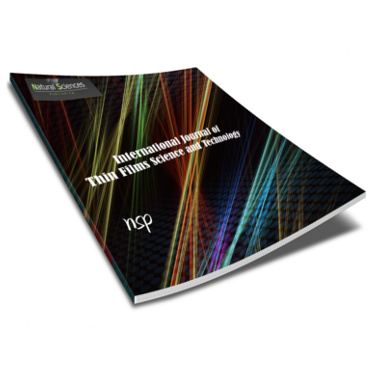International Journal of Thin Film Science and Technology

Abstract
Transparent conductive oxides, commonly known under « TCO » are widely used in many modern applications (Flat screens, Windows antifreeze, Solar cells…), this is essentially due to the good compromise between transparency in visible light and good electrical conductivity. This kind of oxides includes many materials like: In2O3, SnO2, Cd2SnO4, CdSnO2. Non-toxicity and abundance in the Land of zinc make it a best candidate for study, when oxygen is added as a reactive gas in the plasma and fluor as a doping agent, the zinc oxide is more stable in this kind of plasma compared to other examples. Thin films of zinc oxide are synthesized by the magnetron sputtering; this technique deposit thin layers of metal, semiconductor or dielectric. It is based on the interaction of plasma with the electric field E and magnetic field B, in the magnetron cathode, E and B are perpendicular. A complete study is done, beginning with the deposition of thin layers of zinc oxide doped with fluor and the analysis by X-ray photoelectron spectroscopy (XPS) which allows us to know the concentration of chemical elements present on the surface layers, and terminated by the Fourier Transformer Infrared (FTIR) Spectroscopy which gives us the optical properties [1], the results were interesting to reach our aim: transparent conductive oxide of zinc, but some issues concerning the electric conductivity have been reported and solutions suggested.
Recommended Citation
Balhamri, A.; Deraoui, A.; Bahou, Y.; Rattal, M.; Mouhsen, Az.; and Harmouchi, M.
(2015)
"Surface and Optical Properties of Zinc Oxide Doped With Fluor Synthesized By Magnetron Sputtering: Applications in Transparent Conductive Oxides (TCO),"
International Journal of Thin Film Science and Technology: Vol. 4
:
Iss.
3
, PP -.
Available at:
https://digitalcommons.aaru.edu.jo/ijtfst/vol4/iss3/8

